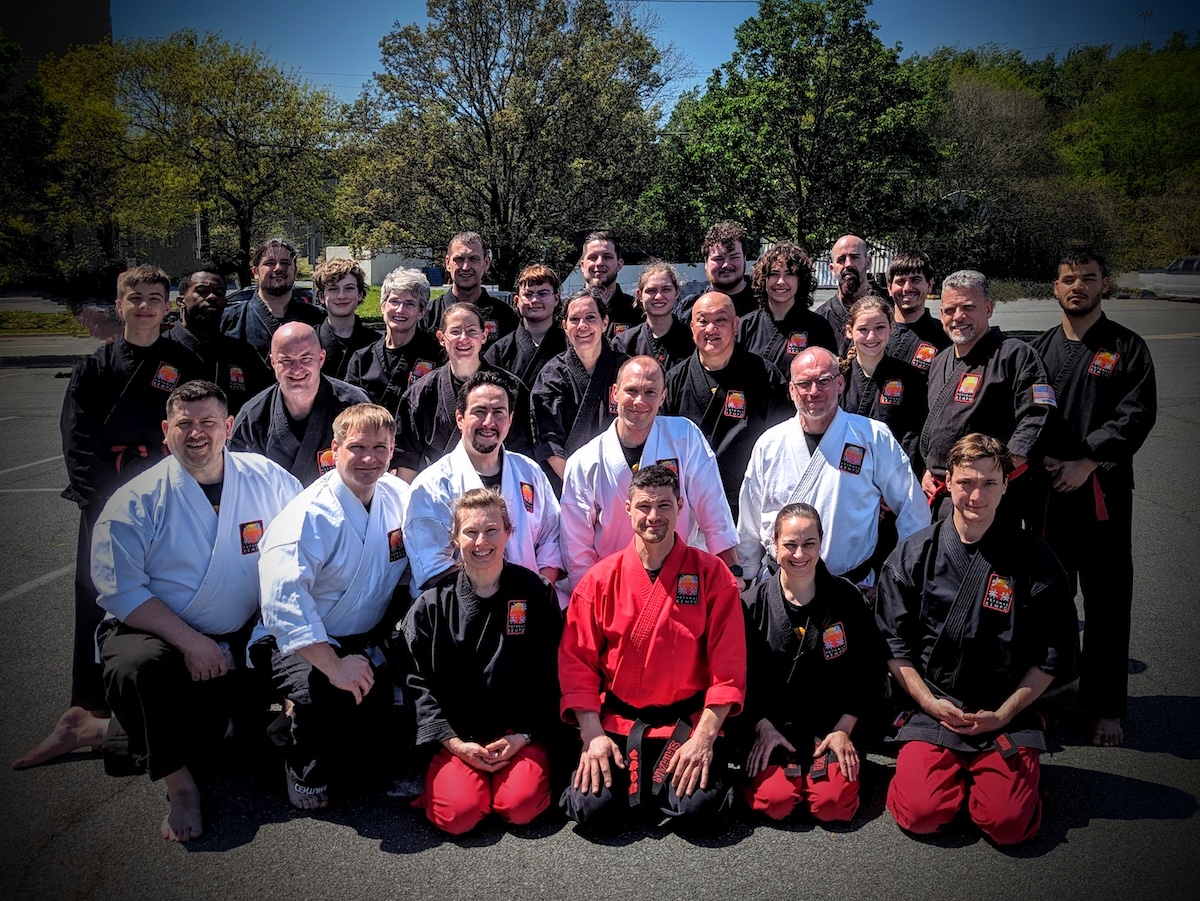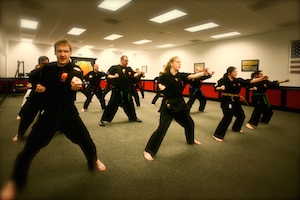It is often said — and sometimes even understood — that the Circle Beats the Line and the Line Beats the Circle but it merits discussion what this really means.
 Linear and Circular Movements
Linear and Circular Movements
If we consider power we know that linear movements radiating from our center are the most powerful category of movements. However, if our target is not on a line from our center a linear movement will not be able to reach it. Thus a circular movement will be the most powerful way of reaching it by default.
Similarly, we know that a linear movement will always be the fastest way to get from one point to another. But we must consider the all too common case where our limb is already extended from its previous use. At this moment, retracting our limb and extending it again may take much longer than simply utilizing a circular movement from the position we are in. Thus a circular movement may actually be the the quickest movement.
We could do this all day. The point is that all pros and cons are not only relative, they are situationally dependent.
The Circle Beats the Line
So, let us consider the case of a linear attack. It is possible to block each strike with a linear block, but the attacks will continue. Each punch will be fast and followed immediately by another. We may be able to block each one — maybe even counter some of them — but in the end the conflict will go to the person who is faster and more powerful.
Let us consider instead, countering this linear attack with a circular defense. Now, as a hard linear attack comes at us we use a circle to redirect it to the side. Depending on the direction this will cross their limb across their body or open their center. In either case it will help to forestall the next attack. This break in the rhythm of the conflict can be leveraged to advantage.
The Line Beats the Circle
Alternately, let us consider a circular attack. A well articulated circular attack will strike to various spots from a thousand angles. Blocking all of the angles will require an equally skilled series of circular defenses, each one positioned to deflect the attacks at just the right angle. Instead we could utilize a linear defense and strike to the core of their attacks. The speed and power generated from a classic linear attack will be hard to counter with their circular movements.
 The Circle Beats the Line and the Line Beats the Circle
The Circle Beats the Line and the Line Beats the Circle
And thus we see the line beating the circle and the circle beating the line. It is important not to overstate either case or the self-contradictory nature of the argument will come to the surface. A perfectly executed linear attack can not be repulsed by a mediocre circular defense any more than a perfect circular attack can be defeated by a poor linear defense. It is in the case where opponents are evenly matched that an advantage is gained by utilizing a different strategy.
It should also be noted that combining the two strategies is the best of all possible worlds. None of us are wholly Yin or Yang, nor should we be. A linear block followed by a circular counter and vice versa will have the best results of all. As we have said, all pros and cons are relative and situationally dependent.
Maximizing Linear Effectiveness
The benefits of linear movements are rooted in their power and speed. In order to maximize the effectiveness of any linear movement we much maximize power and speed.
Maximizing Circular Effectiveness
Circular movements require excellent accuracy and timing. Though not as self-explanatory as the notes about linear movement, theses points are no less important. In order for a circular block to deflect a linear attack it must strike the attacking limb very precisely and at exactly the right time. Likewise, a circular attack — lacking the brutish power of a linear attack — must strike to a sensitive area very precisely and — because it has no hope of powering through a block — it much be timed to avoid all blocks. Thus we see that circular movement require the height of accuracy and timing.
The Circle and the Line
So what is better? Neither, of course. What should I employ? Both, of course. Victory is gained through the proper selection of tactics and their superior execution. Good luck!






